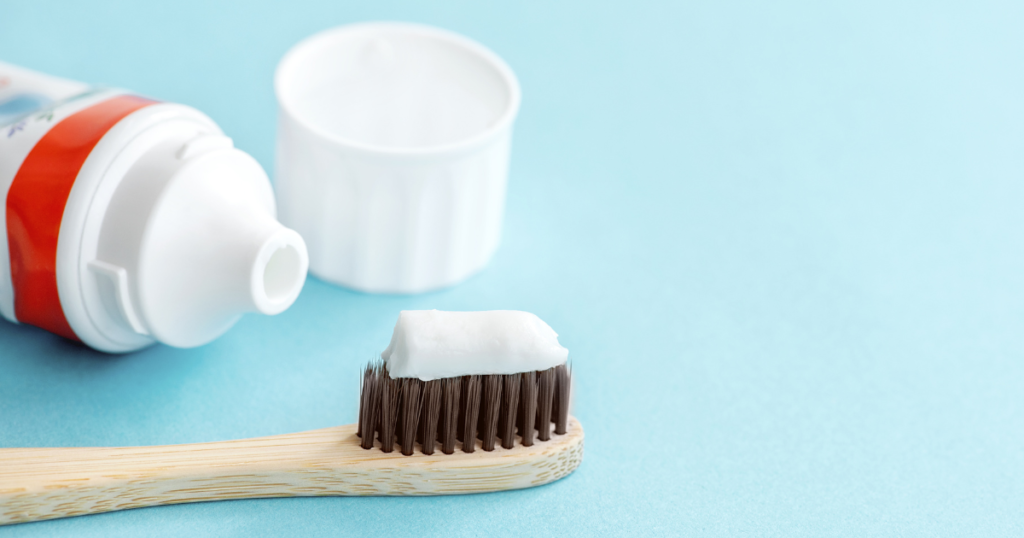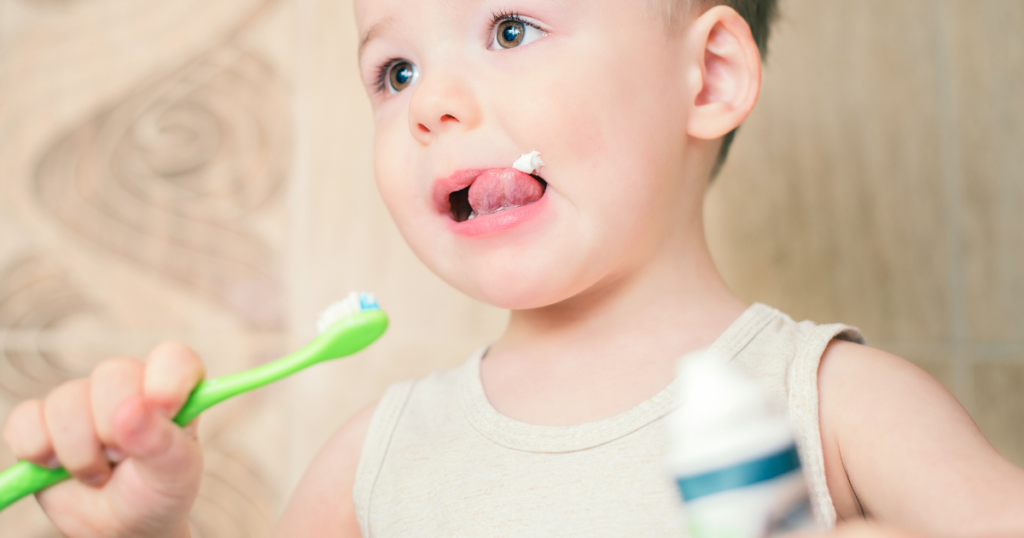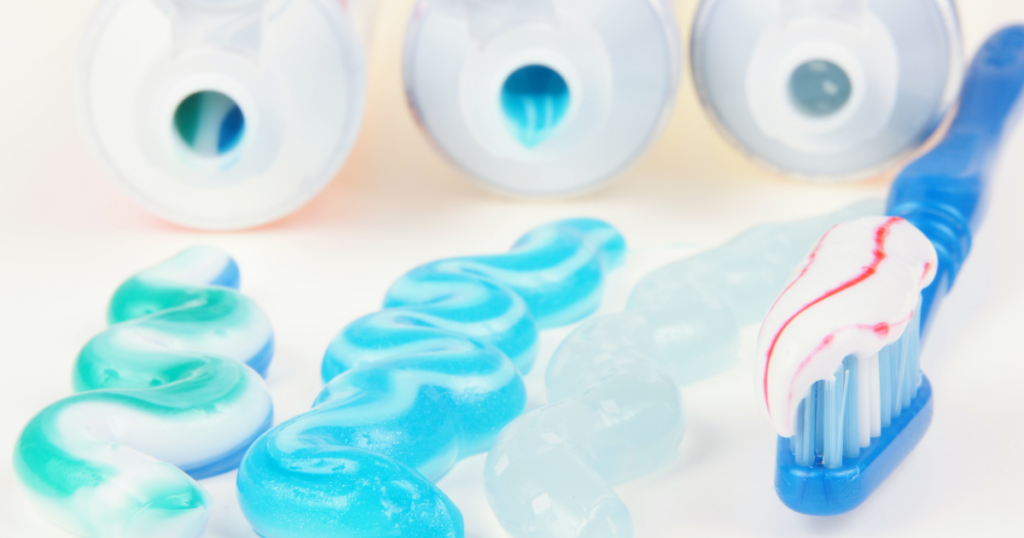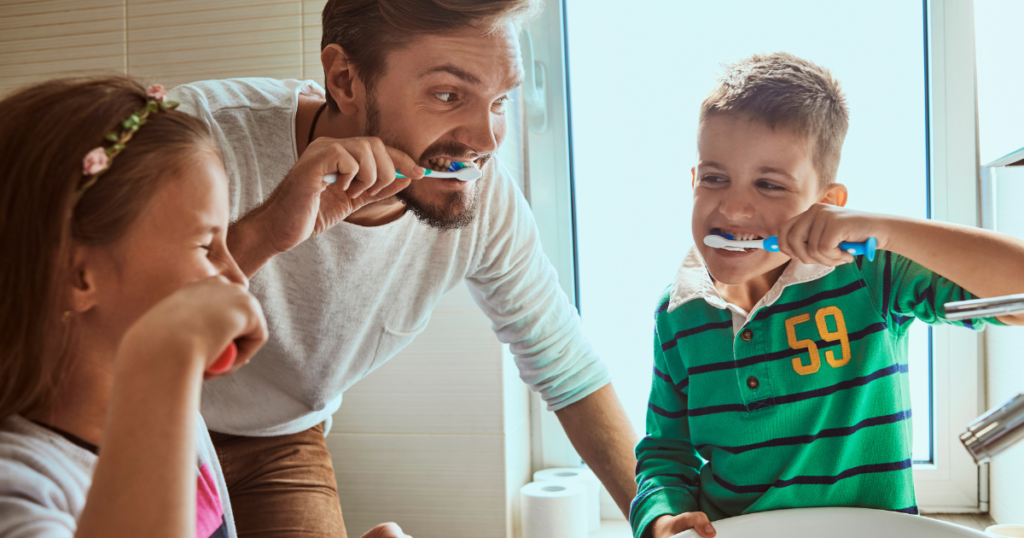When it comes to dental hygiene, choosing the right toothpaste is crucial. Adults often ask whether they can safely use children’s toothpaste. While designed to be gentle and appealing to younger taste buds with fun flavors and lower fluoride levels, children’s toothpaste is a viable option for adults, particularly those with sensitive teeth. However, it’s essential to consider whether these formulations meet the oral health needs of adults, who are more susceptible to dental issues like decay and gum disease.
This introduction explores the safety and effectiveness of adults using children’s toothpaste, diving into the core differences between children’s and adult toothpaste to determine if such a switch is beneficial or potentially problematic.
Understanding Toothpaste Ingredients

Toothpaste is a critical component of daily oral hygiene, and its effectiveness hinges on its ingredients. The most common ingredient is fluoride, which strengthens tooth enamel and prevents decay. Different types of fluoride, such as sodium fluoride and stannous fluoride, offer various benefits, including antibacterial properties and sensitivity relief. Abrasives like hydrated silica or calcium carbonate are added to help remove plaque and surface stains. Toothpaste also contains surfactants such as sodium lauryl sulfate, which create foam to lift debris from teeth.
Additionally, humectants like glycerol prevent the paste from drying, and flavoring agents enhance its taste. Thickeners and binders maintain the toothpaste’s consistency. For specific needs, some toothpaste includes additional ingredients such as triclosan for antibacterial action or potassium nitrate for sensitivity relief. Understanding these components is crucial for choosing the right toothpaste to maintain optimal dental health.
Ingredients Common in Kids’ Toothpaste

Kids’ toothpaste is formulated to be safe and appealing for young users, focusing on gentle ingredients and fun flavors. Here are some common ingredients found in children’s toothpaste:
- Lower Fluoride Levels: Often contains less fluoride than adult versions to minimize risks if swallowed while providing enough to help prevent cavities.
- Milder Flavors: Milder flavors typically feature bubblegum, fruit, or mild mint, which are more appealing to children’s palates and less overwhelming than the intense mint flavors in adult toothpaste.
- Calcium Carbonate: A gentle abrasive that helps remove plaque and surface stains from teeth without being too harsh.
- Silica is another mild abrasive commonly used in kids’ toothpaste to clean teeth effectively without damaging young, sensitive enamel.
- Xylitol is a sugar substitute that sweetens toothpaste and offers antibacterial properties, helping to reduce plaque formation and tooth decay.
- Sodium Lauryl Sulfate (SLS): Used in lower concentrations than in adult toothpaste, this surfactant helps create foam, making brushing more effective by lifting food particles and residues from teeth.
- Glycerin: A humectant is included to keep the toothpaste from drying out, making it easier to squeeze out of the tube and pleasant to use.
- Sorbitol: Another humectant that adds sweetness and texture to the toothpaste without contributing to tooth decay.
Critical Differences Between Kids’ and Adults’ Toothpaste
Kids’ toothpaste is formulated to be safe and appealing for young users, focusing on gentle ingredients and fun flavors. Here are some common ingredients found in children’s toothpaste:
- Lower Fluoride Levels: Often contains less fluoride than adult versions to minimize risks if swallowed while still providing enough to help prevent cavities.
- Milder Flavors: Milder flavors typically feature bubblegum, fruit, or mild mint, which are more appealing to children’s palates and less overwhelming than the intense mint flavors in adult toothpaste.
- Calcium Carbonate: A gentle abrasive that helps remove plaque and surface stains from teeth without being too harsh.
- Silica is another mild abrasive commonly used in kids’ toothpaste to clean teeth effectively without damaging young, sensitive enamel.
- Xylitol is a sugar substitute that sweetens toothpaste and offers antibacterial properties, helping to reduce plaque formation and tooth decay.
- Sodium Lauryl Sulfate (SLS): Used in lower concentrations than in adult toothpaste, this surfactant helps create foam, making brushing more effective by lifting food particles and residues from teeth.
- Glycerin: A humectant that keeps the toothpaste from drying out, making it easier to squeeze out of the tube and pleasant to use.
- Sorbitol: Another humectant that adds sweetness and texture to the toothpaste without contributing to tooth decay.
Fluoride Content
Fluoride is a crucial ingredient in toothpaste, known for strengthening tooth enamel and preventing dental cavities. The concentration and type of fluoride can vary significantly between different toothpaste formulations, particularly when comparing products intended for adults and children.
Adult Toothpaste:
Adult formulations typically contain higher levels of fluoride to maximize cavity protection and support enamel repair. The joint range for fluoride content in adult toothpaste is between 1,000 to 1,500 parts per million (ppm). Types of fluoride used include sodium fluoride, stannous fluoride, and sodium monofluorophosphate, each providing specific benefits such as antibacterial properties and protection against tooth decay.
Kids’ Toothpaste:
Children’s toothpaste generally features lower fluoride levels to reduce the risk of dental fluorosis, which can occur from overexposure to fluoride when teeth develop. The fluoride content in toothpaste for children usually ranges from 500 to 1,000 ppm. Pediatric dental guidelines suggest using a smear of toothpaste with at least 1,000 ppm fluoride for children under three years old and a pea-sized amount for children aged three to six to balance efficacy with safety.
Abrasiveness
Abrasiveness in toothpaste is a crucial aspect of its formulation, affecting its ability to remove plaque and surface stains from teeth. However, toothpaste can damage enamel and gums if it is too abrasive, leading to sensitivity and other dental issues. Therefore, it is essential to understand the balance between effective cleaning and gentle care when selecting the right toothpaste.
Role of Abrasives:
Abrasives in toothpaste help scrub the surface of the teeth, physically removing plaque (a biofilm of bacteria), food particles, and stains caused by substances like coffee and tobacco. Cleaning is gentle enough to avoid damaging the enamel or dentin beneath.
Common Abrasives:
- Calcium Carbonate: A natural abrasive that removes plaque without being overly harsh on the enamel.
- Hydrated Silica: This compound varies in coarseness and is used in adult and children’s toothpaste. It’s engineered to be effective at cleaning while minimizing enamel wear.
- Dicalcium Phosphate: Another mild abrasive commonly used for its gentle cleaning properties.
- Aluminum Oxide: Often used in whitening toothpastes for its effectiveness in removing surface stains.
Measuring Abrasiveness:
The abrasiveness of toothpaste is measured by its Relative Dentin Abrasivity (RDA) value. The American Dental Association (ADA) recommends toothpastes with an RDA value below 250, which are considered safe and effective. Toothpaste designed for sensitive teeth typically has lower RDA values to minimize irritation.
Kids’ Toothpaste:
Children’s toothpastes generally use fewer milder abrasives than adult versions. This is because children’s enamel is more delicate, and the primary goal is to provide gentle care while effectively cleaning young teeth.
So, Can adults Use baby toothpaste?
Yes, adults can use baby toothpaste, but it’s essential to understand that it might not be the most effective option for their dental health needs. Baby toothpaste is designed to be safe for infants and toddlers, featuring deficient levels of fluoride or none to prevent the risks associated with fluoride ingestion in young children. Baby toothpaste may not provide sufficient protection for adults needing a higher level of fluoride to protect against tooth decay and strengthen enamel.
Additionally, the mild abrasives used in baby toothpaste are less effective at removing plaque and stains on adult teeth, which could lead to less thorough cleaning over time. While there’s no harm in using baby toothpaste occasionally—perhaps in situations where no other toothpaste is available—for regular use, adults should choose a toothpaste that is formulated to meet their specific oral health requirements, which typically includes a higher fluoride content and more effective cleaning agents.
Does baby toothpaste work for adults?
Baby toothpaste, formulated specifically for infants and toddlers, typically features extremely low or no fluoride content to ensure safety when swallowing, a common concern for young children. For adults, however, the fluoride level in baby toothpaste might be insufficient to provide adequate protection against tooth decay and to promote enamel repair, which is crucial for maintaining adult dental health.
The mild flavors and minimal abrasiveness of baby toothpaste also mean it’s less effective at removing plaque and stains than adult formulas. While adults can technically use baby toothpaste without harm, it won’t meet the oral health needs of an adult, who requires more robust cavity protection and higher levels of abrasives for cleaning.
Is children’s toothpaste safe for adults?
Yes, children’s toothpaste is safe for adults to use. However, while there are no inherent risks in using children’s toothpaste, it might not be the most effective choice for adult oral hygiene needs. Children’s toothpaste generally has lower fluoride levels than adult versions, which reduces the risk of fluoride overdose in young kids who might swallow toothpaste accidentally. This reduced fluoride content for adults means less protection against tooth decay and weaker enamel reinforcement.
Moreover, the flavors and formulations of children’s toothpaste are designed to be particularly appealing and gentle for young users, potentially making them less effective at removing plaque and stains on adult teeth. Adults should consider using toothpaste that meets their specific fluoride needs and cleaning requirements for optimal dental health.
What are the benefits of using kids’ toothpaste as adults?
While adult-specific toothpaste is generally recommended for optimal oral health, using children’s toothpaste as an adult can have its benefits under certain circumstances. Here are some potential advantages:
- Gentler on Sensitive Teeth and Gums: Children’s toothpaste is formulated to be mild and gentle, making it a good option for adults with sensitive teeth or delicate gums. The lower abrasive content helps prevent irritation caused by stronger adult toothpaste.
- Lower Fluoride Levels: For adults concerned about their fluoride intake or have a medical condition requiring them to limit fluoride, children’s toothpaste provides a viable alternative with its reduced fluoride content.
- Pleasant Flavors: Those who find the intense mint flavors of adult toothpaste overwhelming might prefer the milder, sweeter flavors of children’s toothpaste, such as bubblegum, fruit, or mild mint. This can make the brushing experience more enjoyable and encourage consistent oral hygiene habits.
- Allergen-Free Options: Some children’s toothpaste tubes are formulated without specific allergens like gluten, making them suitable for adults with particular allergies or sensitivities.
- Helpful During Pregnancy: Pregnant women, particularly those dealing with morning sickness, might find milder-flavored children’s toothpaste easier to tolerate than stronger-flavored adult versions, which can help maintain oral hygiene during pregnancy.
Potential Disadvantages
Using children’s toothpaste as an adult may come with several potential disadvantages that could impact oral health:
- Insufficient Fluoride Levels: Children’s toothpaste often has reduced fluoride content to minimize the risk of fluorosis in young children. For adults, these lower levels may not provide sufficient fluoride to prevent tooth decay and strengthen enamel.
- Less Effective Cleaning: The mild abrasives used in children’s toothpaste might not remove plaque and stains as effectively as those found in adult toothpaste. This could lead to less thorough cleaning and potentially more dental problems.
- Inadequate Plaque Control: The formulation of children’s toothpaste is designed for younger teeth and may not effectively address plaque buildup in adults, increasing the risk of gum disease and other oral health issues.
- Flavor and Texture: While the flavors of children’s toothpaste appeal to kids, they might not be preferred by adults, who may find them too sweet or not as refreshing as those designed for adult tastes.
- Lack of Specialized Ingredients: Adult toothpastes often contain additional ingredients for specific issues, such as tartar control, whitening agents, or treatment for sensitivity. Children’s formulas typically do not offer these targeted benefits, which could limit the effectiveness of an adult’s oral care routine.
Alternative Options

For adults considering alternatives to their regular toothpaste, several options can meet specific oral health needs while addressing concerns such as sensitivity or fluoride intake. Here are some effective choices:
- Toothpaste for Sensitive Teeth: These formulations contain potassium nitrate or stannous fluoride, which helps reduce tooth sensitivity by blocking pathways through the teeth that attach to nerves inside.
- Fluoride-Free Toothpaste: For those looking to avoid fluoride, fluoride-free toothpaste uses natural ingredients like xylitol and herbal extracts to help maintain oral health.
- Natural/Organic Toothpaste: Made from natural ingredients without synthetic additives, these are a good choice for adults seeking a more organic approach to dental care.
- Whitening Toothpaste: Whitening toothpastes are designed for adults who want to brighten their smiles. They contain mild abrasives and chemicals specifically designed to remove stains and lighten tooth color.
- Charcoal Toothpaste: Popular for its detoxifying properties, charcoal toothpaste can help remove surface stains, though its effectiveness and safety for enamel are debated among dental professionals.
- Baking Soda Toothpaste: Known for its natural whitening properties, baking soda toothpaste can effectively clean teeth and neutralize acids produced by bacterial plaque.
- Tartar Control Toothpaste: This type contains chemical compounds that help prevent tartar formation, an accumulation of plaque that can lead to periodontal disease.
Conclusion
While children’s toothpaste is safe for adults to use, it may not adequately meet the specific oral hygiene requirements that adults have. The lower fluoride content and milder abrasives suit young, developing teeth but may fall short in providing sufficient dental care for adults. Those considering using children’s toothpaste due to sensitivities or preferences should weigh the potential benefits against the drawbacks. For comprehensive dental health, adults should ideally select toothpaste that addresses their unique needs, such as cavity prevention, tartar control, and gum health. Consulting with a dental professional can provide personalized advice and recommendations based on individual health conditions and oral hygiene goals.
FAQs
1. Can adults use children’s toothpaste every day?
- Adults can use children’s toothpaste daily, but it may not offer adequate fluoride to prevent tooth decay and strengthen enamel as effectively as adult-specific formulas.
2. Are there any risks associated with adults using toothpaste meant for children?
- The primary risk is that the lower fluoride content may not sufficiently protect against cavities. The milder abrasives might not effectively remove plaque and stains, potentially leading to poorer oral hygiene.
3. What should I look for in adult toothpaste if I prefer milder flavors?
- Look for toothpaste brands offering milder mint or herbal flavors for adults. These will still contain appropriate fluoride levels and abrasives necessary for effective dental care while being gentler on the palate.
4. Can using children’s toothpaste worsen dental problems in adults?
- If used exclusively over a long period, children’s toothpaste may contribute to dental issues in adults by not providing enough fluoride to protect against decay and not removing plaque effectively.
5. Are there toothpastes available that are suitable for both children and adults?
- Yes, some toothpaste brands offer mild yet effective formulations for both children and adults, typically labeled as family toothpaste. These can be a good compromise, containing moderate fluoride levels and a gentle cleaning action suitable for all ages.
read our More post: What to Do When Your Parents Are Fighting: Guide for Families















